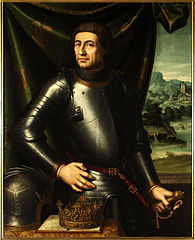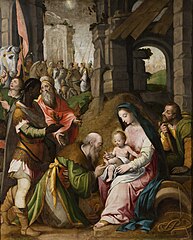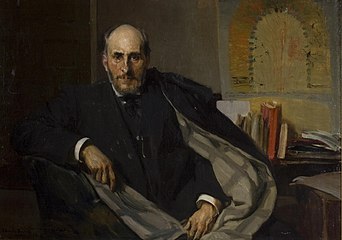Zaragoza Museum
- Machine translation, like DeepL or Google Translate, is a useful starting point for translations, but translators must revise errors as necessary and confirm that the translation is accurate, rather than simply copy-pasting machine-translated text into the English Wikipedia.
- Consider adding a topic to this template: there are already 5,026 articles in the main category, and specifying
|topic=will aid in categorization. - Do not translate text that appears unreliable or low-quality. If possible, verify the text with references provided in the foreign-language article.
- You must provide copyright attribution in the edit summary accompanying your translation by providing an interlanguage link to the source of your translation. A model attribution edit summary is
Content in this edit is translated from the existing Spanish Wikipedia article at [[:es:Museo de Zaragoza]]; see its history for attribution. - You may also add the template
{{Translated|es|Museo de Zaragoza}}to the talk page. - For more guidance, see Wikipedia:Translation.
Zaragoza Museum (Spanish - Museo de Zaragoza) is a national museum in the Plaza de los Sitios in the city of Zaragoza in Spain. Its collections range from the Lower Palaeolithic to the modern era and include archaeology, fine arts, ethnology and Iberian ceramics.
It is the city's oldest museum and its main building - housing the fine arts and archaeology display - is the Neo-Renaissance structure designed for the Spanish-French Exhibition of 1908 by Ricardo Magdalena and Julio Bravo. Its design was inspired by the Patio de la Infanta, home of the Renaissance merchant and patron Gabriel Zaporta. The museum also has an ethnology display at the Casa Pirenaica, a ceramics display at the Casa de Albarracín in the Parque José Antonio Labordeta and the remains of Colonia Celsa in Velilla de Ebro.
Gallery
-
 Descent into Hell, 1361–1362, by Jaime Serra
Descent into Hell, 1361–1362, by Jaime Serra -
 St Helena Meeting the Jews, 1483–1487, by Miguel Ximénez.
St Helena Meeting the Jews, 1483–1487, by Miguel Ximénez. -
 Portrait of Alfonso V of Aragón, 1557, by Juan de Juanes.
Portrait of Alfonso V of Aragón, 1557, by Juan de Juanes. -
 Adoration of the Magi, 1580–1585, by Pablo Esquert.
Adoration of the Magi, 1580–1585, by Pablo Esquert. -
 Portrait of Luis María de Borbón y Vallabriga as a Child, 1783, by Francisco de Goya.
Portrait of Luis María de Borbón y Vallabriga as a Child, 1783, by Francisco de Goya. -
 Portrait of Santiago Ramón y Cajal, 1906, by Joaquín Sorolla.
Portrait of Santiago Ramón y Cajal, 1906, by Joaquín Sorolla.
External links
- Museo de Zaragoza
- Museo de Zaragoza @ Patrimonio Cultural de Aragón
- Paintings by Goya in the Museo de Zaragoza
- Guide to the Museo de Zaragoza
- Virtual tour of the Zaragoza Museum provided by Google Arts & Culture
 Media related to Museo de Zaragoza at Wikimedia Commons
Media related to Museo de Zaragoza at Wikimedia Commons
- v
- t
- e
 | This article about ethnography is a stub. You can help Wikipedia by expanding it. |
- v
- t
- e


















